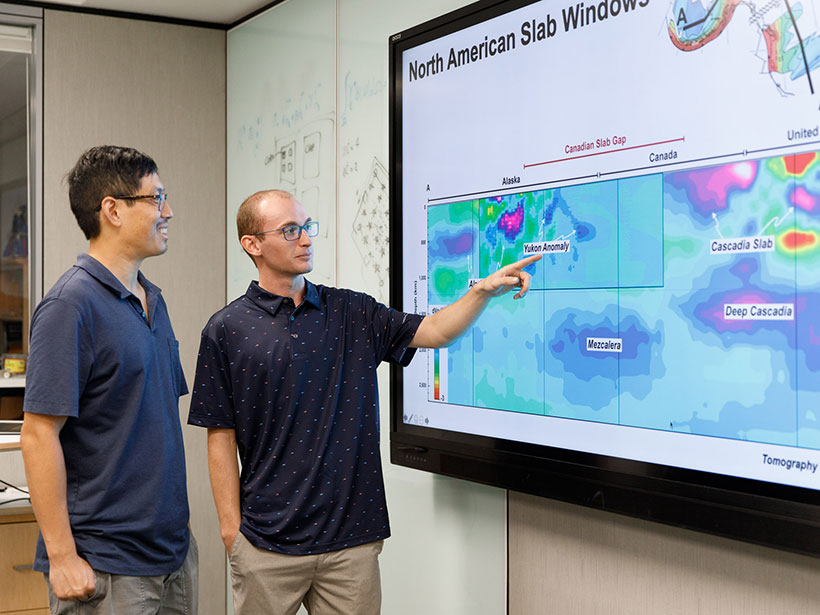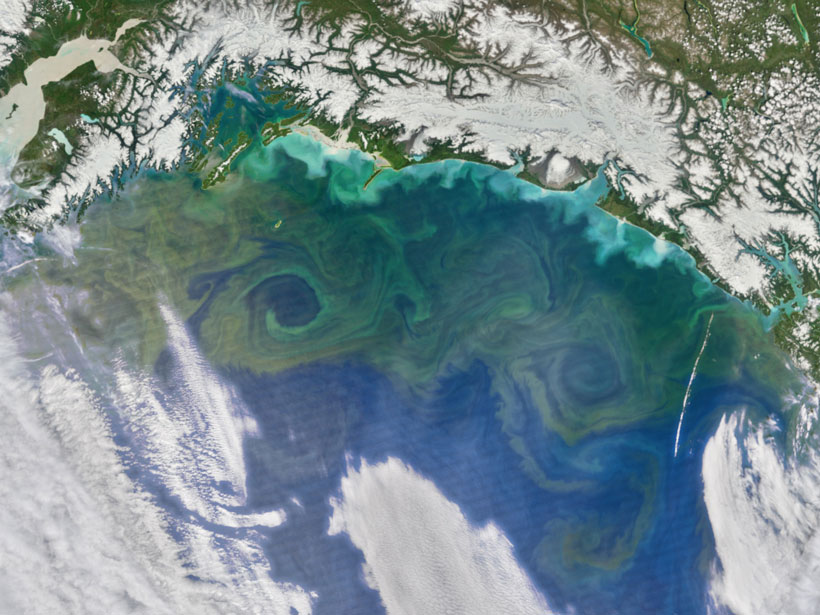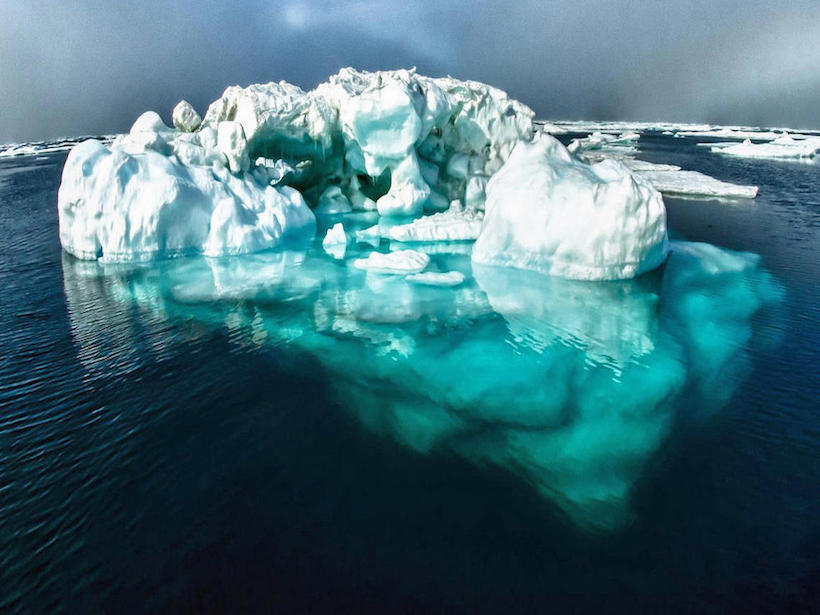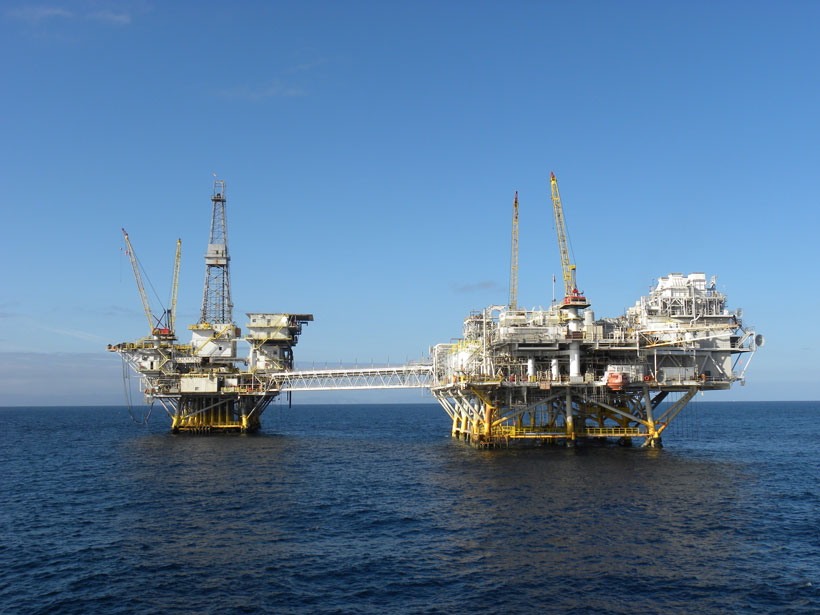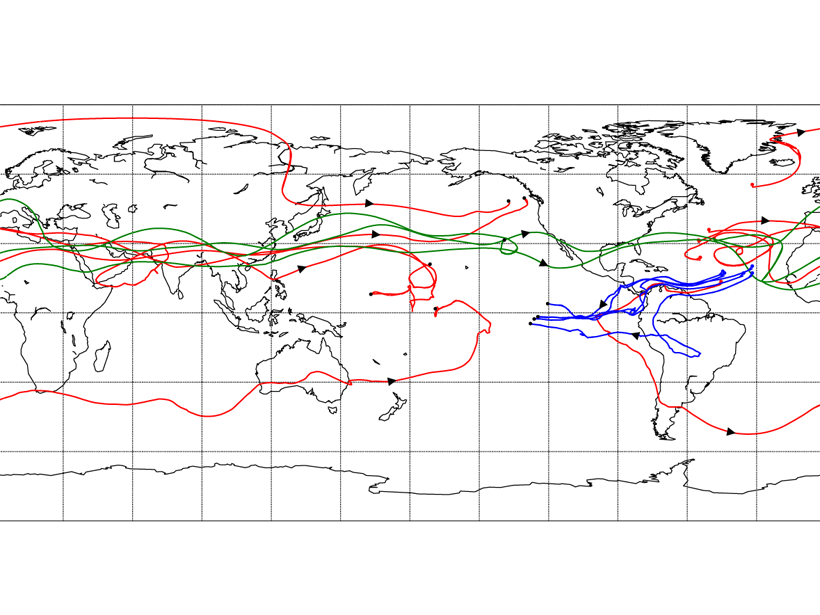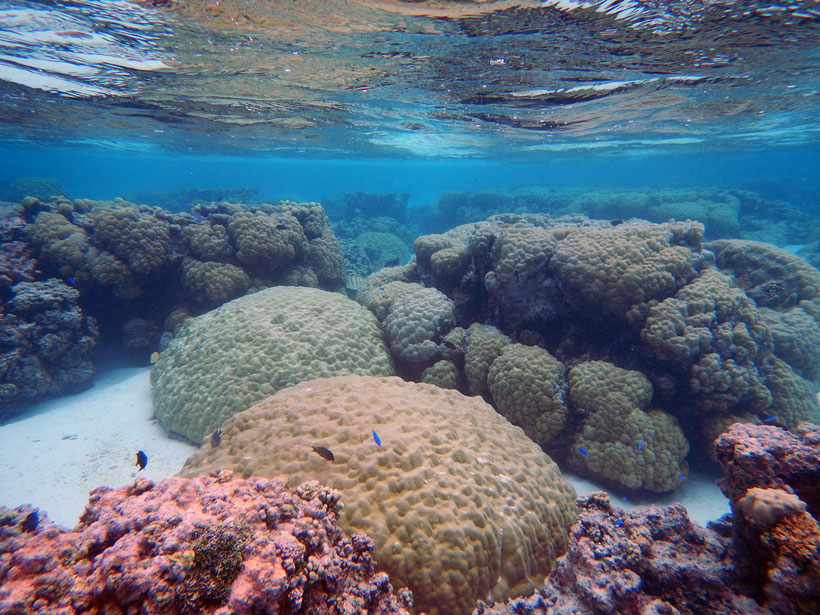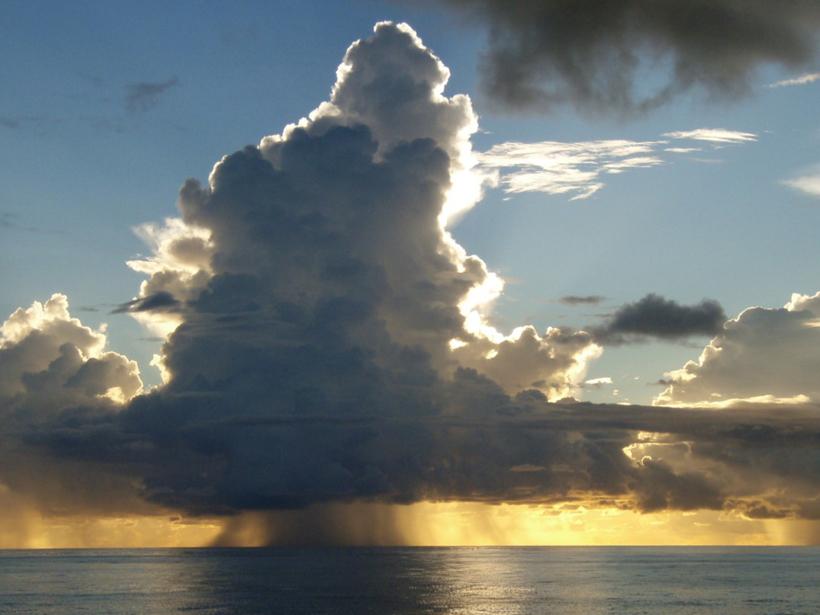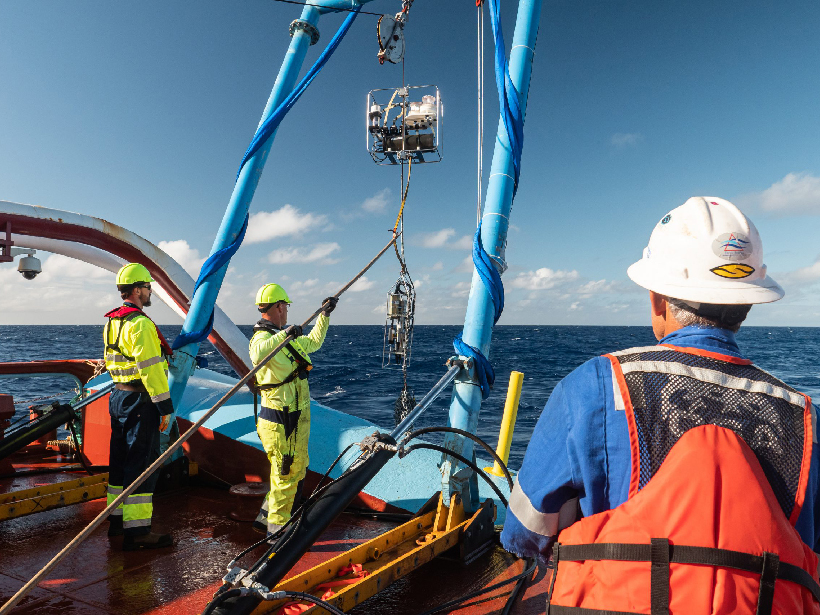Using a technique similar to taking a CT scan of Earth, researchers found the possible remnants of a long-debated “missing” tectonic plate.
Pacific Ocean
A Promising Development for Detecting Ocean Productivity
A comparison of primary productivity measurements across the North Pacific Ocean demonstrates the potential for using autonomous instruments to discern effects of climate change on the marine food web.
Sediment Layers Pinpoint Periods of Climatic Change
Researchers studying sediment cores from the Gulf of Alaska have pinpointed when the Cordilleran Ice Sheet, now extinct, disgorged icebergs into the Pacific Ocean.
Los Costos Ecológicos de Remover las Plataformas Petroleras Mar Adentro en California
Las plataformas de perforación de petróleo- y gas-mar adentro son hábitats ricos para peces. Eliminarlas por completo resultaría en una pérdida del 95% de biomasa de peces, revela una nueva investigación.
Typhoons Getting Stronger, Making Landfall More Often
New research shows a growing threat from Pacific storms amid climate change.
A New Perspective on a Classic Climate Conundrum
The Lagrangian method applied to tracking water transport between the Atlantic and Pacific basins reveals a larger contribution by mid-latitude westerly winds across Eurasia than previously thought.
Corals Make Reliable Recorders of El Niño Fluctuations
A new tool that reconciles modeling and paleoclimate data builds confidence that tropical Pacific corals reliably archive natural variability in the El Niño–Southern Oscillation climate pattern.
Mysterious Engine of the Madden‐Julian Oscillation
Understanding the fundamental physics of the Madden‐Julian Oscillation, a phenomenon that occurs over the Indian and Pacific Oceans, remains a challenge in tropical atmospheric research.
New Evidence of a Giant Lava Lamp Beneath the Ancient Pacific
Seismic surveys find evidence of a superplume in Earth’s mantle that fueled ancient megaeruptions in the Pacific.
Below the Great Pacific Garbage Patch: More Garbage
New research is finding there’s more to marine debris than just what appears near the ocean surface, including tons of microplastics extending hundreds of meters into the deep.

